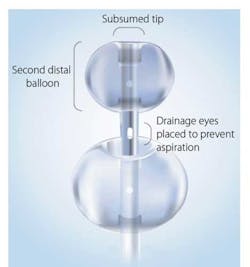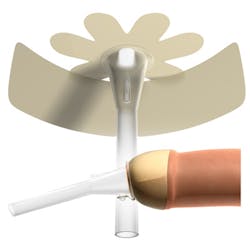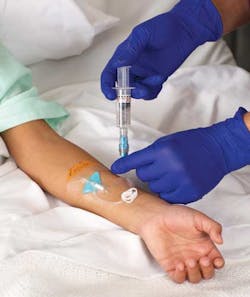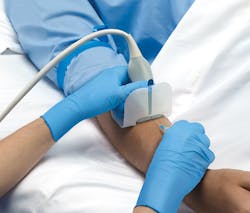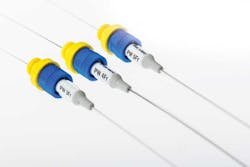Catheters are so common that most patients will have one or more during a hospital stay. Catheters are used to deliver medication, fluids, and nutrition. They are used to drain gases and body fluids. Catheters sometimes measure pressure in certain areas of the body. They have many uses, but one thing they all have in common is that they are invasive. Wherever catheters go, bacteria may go, with the potential for infection.
Urinary tract infections (UTIs) came under scrutiny in recent history. People don’t often associate UTIs with serious illness and death, but it happens more often than we’d like to think. Catheters that enter a vein or artery provide a path for pathogens to enter, which may result in bloodstream infection (BSI). From there, it could be just a hop, skip, and a jump to sepsis. Clearly, catheters, wherever located and for whatever reason, need to be monitored closely and removed as quickly as feasible.
Conquering CAUTI
Fifteen to twenty-five percent of hospitalized patients receive a urinary catheter. That is thousands of catheters inserted every day. Those numbers alone account for prevalence of infection. The Centers for Disease Control and Prevention (CDC) advise, “Among UTIs acquired in the hospital, approximately 75% are associated with a urinary catheter. . . . The most important risk factor for developing a catheter-associated UTI (CAUTI) is prolonged use of the urinary catheter. Therefore, catheters should only be used for appropriate indications and should be removed as soon as they are no longer needed.”1
Hospital-acquired infections related to Foley catheters are garnering increased attention in recent years as a culture of safety continues to grow in importance, largely because of changes in reimbursement in recent years. Poiesis Medical founder and CEO Greg Wiita outlined some of the reasons for increased focus on CAUTI. “The penalties by the U.S. Department of Health and Human Services, the Centers for Medicare and Medicaid Services (CMS), cost of treating CAUTI, high mortality rate, and medical facilities’ reputation all place great stress on hospital leadership to put in place procedures to reduce all patient-harm events.”
Wiita referred to the CDC and Prevention’s 2016 healthcare-associated infection (HAI) progress report, which noted that CAUTIs have decreased only about seven percent since 2015.2 “Considering that, for more than eight years U.S. facilities have been armed in their fight against CAUTIs, with more than a dozen different groups advocating for a particular protocol, it is clear why many are frustrated. The downward movement of CAUTI events is stubbornly slow.” Wiita added, “The focus on zero being the goal is best practice.”
The indwelling catheter is a vital device in healthcare, but it carries the potential for patient harm. Highlighting the design of the Duette, Wiita explained that it addresses what he believes are harmful design flaws of the single-balloon Foley. “Duette Dual Balloon design adds a bladder-protection balloon, for sensitive tissue preservation, and the active drainage eye supports clinical requirements for urine removal. Duette aligns with existing protocols. Best practices state providers should use the smallest French-size catheter, to reduce mucosal trauma, and to use a securement device, also reducing lower urinary-system damage. Duette follows these same guidelines, seeking to reduce bladder-wall trauma and catheter blockage that are common in Foley catheters.”
Poiesis provides facilities with a CAUTI cost-analysis tool to set goals regarding cost metrics. Wiita said that several large-to-midsize facilities found Duette substantially less expensive than the single-balloon Foley.
Rachel Scharfman, Vice President, Sales and Marketing, Bioderm, Inc., talked about the cost of CAUTIs. “Preventable urinary tract infections caused by indwelling catheters lengthen hospital stays and drive up costs. We believe that at least eighty percent of CAUTIs in men are preventable, and we offer an alternative that delivers superior performance.”
Scharfman described their product, Men’s Liberty Acute, as a male external catheter that replaces diapers, pads, condom catheters, and medically unnecessary indwelling catheters. “Hospitals using Men’s Liberty Acute, and simultaneously implementing new protocols mandating the use of the product, are succeeding in significantly reducing infection rates for men,” said Scharfman. Additionally, long-term–care facilities and community-dwelling men also have access to Men’s Liberty, with a collection pouch that allows men to move freely, while also reducing skin abrasion and the potential for infection.
“Men’s Liberty Acute has been tested by value-analysis teams and nursing professionals all over the country, helping to reduce or eliminate CAUTI rates in men at those facilities,” stated Scharfman. She referred to a study performed at Kindred Chicago Hospital that found use of Men’s Liberty Acute resulted in a decrease of urinary device-days and Foley-catheter days, and may help to prevent risk of urinary tract infection.4
Clobbering CLABSIs
Unlike an intravenous catheter which is usually placed into a vein in the arm or hand, a central venous catheter is usually placed in a large vein in the neck, chest, or groin, for delivery of medicine or fluids or for blood collection. Because central lines are inserted into major veins close to the heart, and may remain in place for extended periods of time, they are more likely to cause serious infection. They provide pathogens easy ingress to the bloodstream. Aseptic protocol may mean the difference between life and death. According to the CDC, “Central-line–associated BSIs (CLABSIs) result in thousands of deaths each year and billions of dollars in added costs to the U.S. healthcare system, yet these infections are preventable.”5
Neal Buchalter, President, Parker Laboratories, touched on the financial disadvantages of CLABSI. “Negative patient outcomes due to catheter-associated infections are now considered avoidable and not reimbursable when acquired after hospitalization. Hospital administrators are very concerned about the financial impact of not only the unreimbursed conditions but also on reducing these hospital-acquired infections under the pay-for-performance incentives established by Medicare.”
Judith A. LaJoie, RN, Director, Clinical Solutions for BD Medical – Medication Delivery Solutions, talked further about the cost of CLABSI and incentives for improvement in CLABSI rates. “Within CMS’s pay-for-performance Healthcare Acquired Condition Reduction Program, hospitals are incentivized to improve patient safety while reducing specific hospital-acquired conditions, one of which is CLABSI.
“CLABSIs can be deadly,” continued LaJoie, “with mortality rates up to 25 percent, and they impose a significant burden on health systems by increasing treatment costs and delaying patient care. Also, as part of the value-based purchasing program, U.S. hospitals are penalized on the number of adverse events, such as CLABSI, that develop while a patient is in their facility. The additional cost of a CLABSI alone is estimated to be $46,000 per occurrence. These costs affect the patients and their families but also have a ripple effect on healthcare workers and the facility. Increased length of stay can lead to other complications and can have an impact on the financial aspect of a patient’s stay.”
BD offers a program aimed at reducing CLABSI. LaJoie described how it works. “BD’s Vascular Access Management with the All Points Training program partners with healthcare facilities that seek to improve patient outcomes and experience as it relates to vascular access. BD’s program includes a robust five-day assessment, where dedicated BD registered nurses partner with facilities to observe practice, gather information on complications and device selection, and make actionable recommendations on policy, process, and product. These recommendations are aligned with evidence-based practice, standards, and guidelines, and they are presented to healthcare executives using their facility’s data collected during the assessment.”
LaJoie cited the experience of Kansas University, which tested BD’s integrated vascular-access–management solution in a quality-assurance initiative in its critical-care and acute-care areas. “The pilot data demonstrated that implementation of the program at the University of Kansas Hospital reduced peripherally inserted venous catheter failure in the first 24 hours to five percent; reduced the complication rate to thirty percent; increased the number of patients completing therapy with the initial central line placed to sixty-one percent; and increased average dwell times to eighty-seven hours, up from fifty-nine hours. Products featured a closed system that reduced the risk of blood exposure.”
“When it comes to intravenous catheter insertions, particularly with ultrasound guidance, proper aseptic technique is the first line of defense to reduce complications,” noted Buchalter, Parker Laboratories. He described their product and explained how it furthers best practices. “UltraDrape encourages application of best practices with ultrasound-guided intravenous catheter placement. UltraDrape is a sterile barrier and securement dressing designed to improve the aseptic nature of peripheral catheter insertion. The design of UltraDrape prevents the transducer and gel from coming into contact with the skin, allowing the clinician to maintain a clean insertion site and eliminating the post-insertion cleanup of the gel. Consistent with the Association for Vascular Access’s guidance document6 on transducer disinfection, the transducer remains protected and covered by UltraDrape, effectively protecting patients from contaminants.”
Buchalter continued, “Peripheral catheter insertion, with or without ultrasound, and the potential for contamination has been found to contribute to CLABSI. According to the Agency for Healthcare Quality and Research, the attributable cost associated with CLABSIs can range from $27,000 to nearly $69,000, with an average cost of $48,000.7 High rates of complications like CLABSI can also reduce a hospital’s reimbursement. Improved insertion methods that emphasize aseptic technique and promote longer dwell time, like use of UltraDrape, can reduce the risk of infection.”
“UltraDrape also saves money by eliminating the need for other costly infection-control methods, like sterile gels and custom sterile probe covers,” added Buchalter. “Its all-in-one design also removes the need for additional securement dressings. Considering that reimbursement is almost non-existent for ultrasound-guided peripheral catheter insertion, reducing procedure costs can have a significant economic impact.”
Access Scientific aims to prevent biofilm from forming on catheters. Steve Bierman, MD, Chief Medical Officer, said, “POWERWAND midline and extended-dwell catheters, made of ChronoFlex C with BioGUARD technology, offers the first and only non-coated catheter proven (in vitro) to inhibit bacterial attachment and biofilm formation, the root cause of CLABSIs.” He believes their product represents “a revolutionary breakthrough in infection-prevention technology.” Bierman said POWERWAND has over 35,000 published catheter-days without a reported infection.
“The POWERWAND, made of ChronoFlex C with BioGUARD technology, has been shown in over one-half dozen peer-reviewed published studies to result in zero midline or extended-dwell catheter infections while reducing CLABSI significantly,” averred Bierman. He pointed to a recently published study that explains the science behind the BioGUARD technology and showing how the “POWERWAND’s unique submicron texturing actually inhibits bacteria from attaching, even during extreme exposures.”8
Noting the “cost of a CLABSI is estimated at $56,000 per incident,” Bierman pointed to the experience of Richmond Medical Center in Staten Island, which reduced CLABSI in one ventilator intensive-care unit by 100 percent by using POWERWAND, resulting in a nearly $500,000 savings as compared with the previous year.
Bierman added, “POWERWAND, made of ChronoFlex C with BioGUARD, is designed to enhance the CLABSI-reduction outcomes of all CDC- and Infectious Diseases Society of America-recommended programs. By enabling clinicians to remove central-venous access devices faster, the infection rate of such lines is greatly reduced.”
References
- 1Centers for Disease Control and Prevention. Catheter-associated urinary tract infections (CAUTI). https://www.cdc.gov/hai/ca_uti/uti.html. Last accessed November 29, 2018.
- Centers for Disease Control and Prevention. 2016 national and state healthcare-associated infections progress report. https://www.cdc.gov/hai/data/portal/progress-report.html. Last accessed November 28, 2018.
- Bailan J, Antar A, Lund T, et al. Novel dual-balloon urinary catheters reduce catheter-associated urinary tract infections. Annual Meeting of the American Urological Association; San Diego, CA; May 6-10, 2016. Abstract MP24-19.
- Quayle BL. Taking the next steps for patient safety and excellence in CAUTI prevention. Presented at the 44th Annual Conference of the Association for Professionals in Infection Control and Epidemiology, Inc; Portland, OR; June 14-16, 2017. Poster.
- Centers for Disease Control and Prevention. Central line-associated bloodstream infection (CLABSI). https://www.cdc.gov/hai/bsi/bsi.html. Last accessed November 29, 2018.
- Thompson J, Garrett JH Jr. Association for Vascular Access Guidance Document. Transducer disinfection for assessment and insertion of peripheral and central catheters for vascular access teams and clinicians. https://www.avainfo.org/page/UltrasoundDisinfect. Last accessed November 29, 2018.
- Agency for Healthcare Quality and Research. Estimating the additional hospital inpatient cost and mortality associated with selected hospital-acquired conditions. Content last reviewed November 2017. http://www.ahrq.gov/professionals/quality-patient-safety/pfp/haccost2017-results.html. Last accessed November 29, 2018.
- Pathak R, Bierman S, d’Arnaud. Inhibition of bacterial attachment and biofilm formation by a novel intravenous catheter material using an in vitro percutaneous catheter insertion model. Medical Devices: Evidence and Research. 2018;11:1-6.
About the Author

Susan Cantrell
Susan Cantrell is Infection Prevention Editor for Healthcare Purchasing News.

